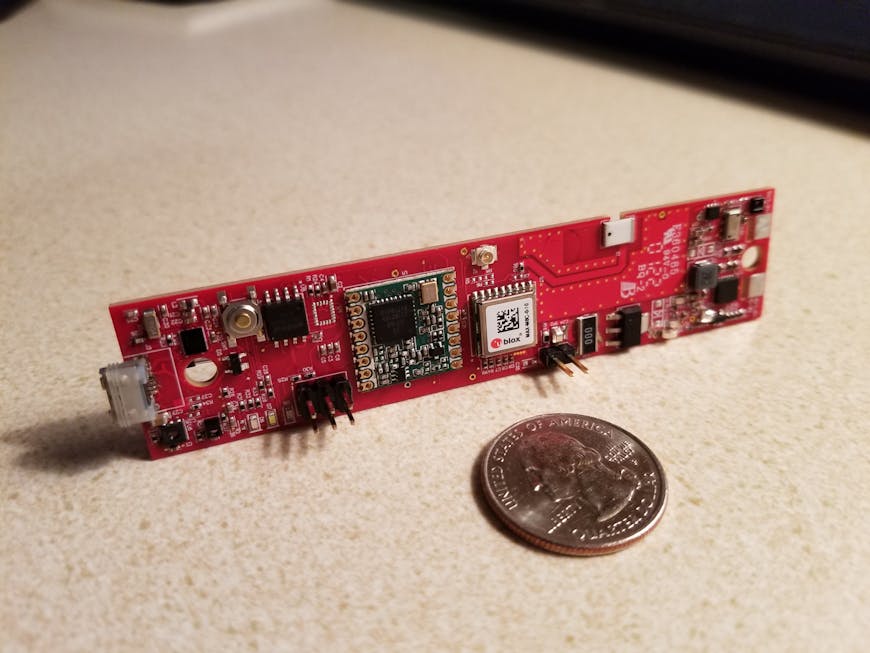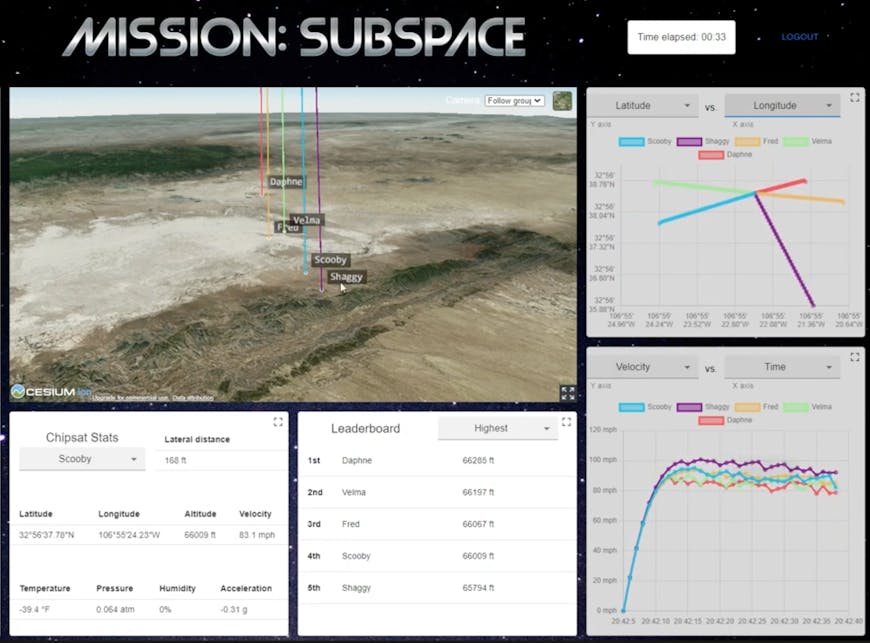New Ascent Brings Space to Students with CesiumJS
To introduce students to the space industry, New Ascent launches “ChipSats” to gather environmental info and tracks their descent in 3D as part of MISSION: SubSpace, an in-classroom aerospace mission experience that uses an interactive web portal built on CesiumJS.
Students get their own mission control experiences with MISSION: SubSpace. Courtesy New Ascent.
New Ascent is a STEM education company, focusing on the impacts of the space industry on daily life by engaging students in grades 3-12 in real science missions. MISSION: SubSpace was released in 2023 to show young learners that they can be involved in space without being an astronaut.
This educational experience uses ChipSats—among the smallest spacecraft, fitting into an adult human’s hand—originally developed by Cornell University and armed with sensors and radio comms. Today, New Ascent uses drones to take the ChipSats up to altitude (usually about 2-4 miles above Earth) and release them. In the future, they plan to use an in-house-developed launch system to deploy at heights above weather balloons (about 10-20 miles above Earth) but below satellites (minimum 100 miles above Earth).
As the ChipSats descend above Spaceport America in Truth or Consequences, New Mexico, USA, MISSION: SubSpace populates with figures from the ChipSats, allowing students to visualize the accurate locations of their own tiny satellites in 3D and observe and analyze temperature, pressure, and other data.
“We want to get kids involved with highly engaging tools. Visuals are huge in learning, especially STEM. The centerpiece of the portal is the 3D visualization using Cesium; it’s not just points on a map anymore,” said co-founder and CEO Rob Quigley.

New Ascent’s ChipSats are approximately 4 inches by 1 inch by 1/4 inch. US quarter for scale. Courtesy New Ascent.
As the ChipSats hurtle down through our atmosphere, they transmit and store environmental data, which is then packaged as a CSV file. This time-series data is combined with high-resolution real-world terrain and imagery from Cesium World Terrain and Bing Maps Aerial imagery via Cesium ion, streamed as 3D Tiles to CesiumJS on student laptops, which are often not as robust as those of professionals. Although the ChipSats descend in New Mexico, classrooms anywhere can access CesiumJS-powered MISSION: SubSpace. Quigley reports he has had more than 120 students signed into the web portal at once, each with their own mission control experience, observing and analyzing time-dynamic data.
MISSION: SubSpace has used CesiumJS from the start, as Quigley had relied on it for trajectory visualization for a different project years ago. With Cesium’s accuracy and ease of use, Quigley knew it would be right for students with varying degrees of tech savvy.
“Using Cesium let us get the portal going in a matter of weeks vs. months,” said Quigley.

ChipSats transmit data about their journeys through Earth’s atmosphere, replayed for and analyzed by students using CesiumJS. Courtesy New Ascent.
New Ascent is working toward near-real-time data visualization for MISSION: SubSpace and plans to include other launch sites, including international locations, as they inspire the next generation of aerospace professionals.
Explore how students and researchers are learning about our planet and beyond with Cesium.